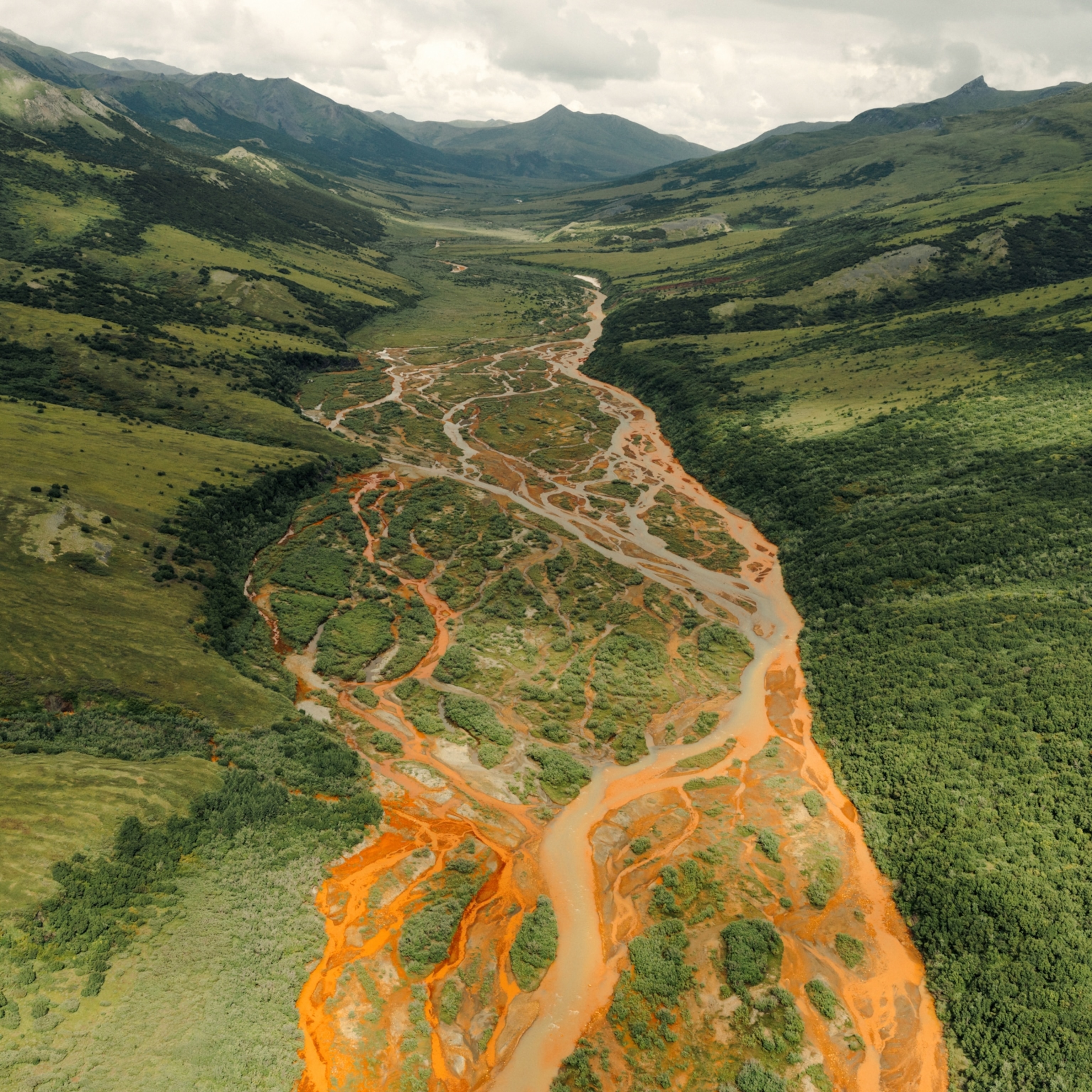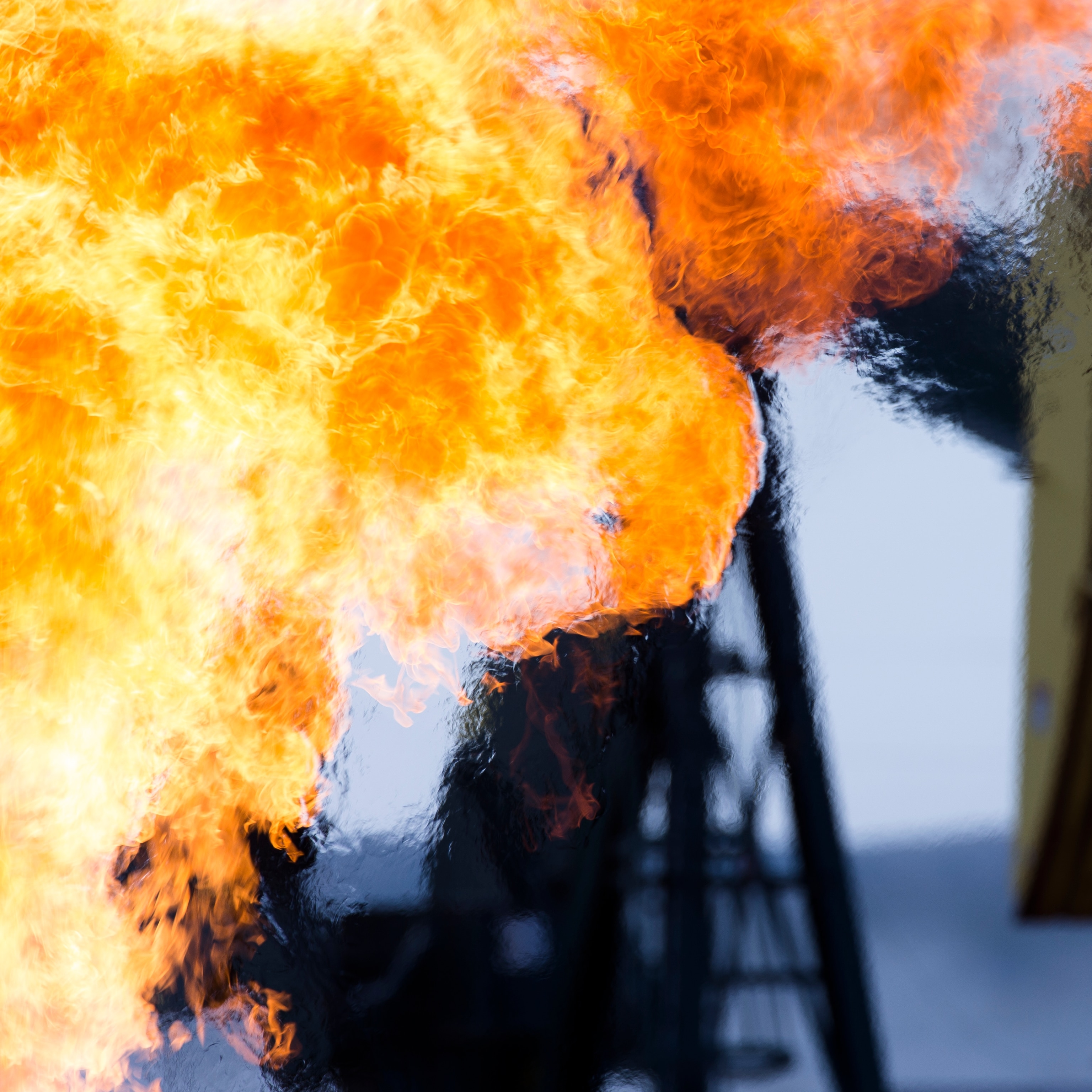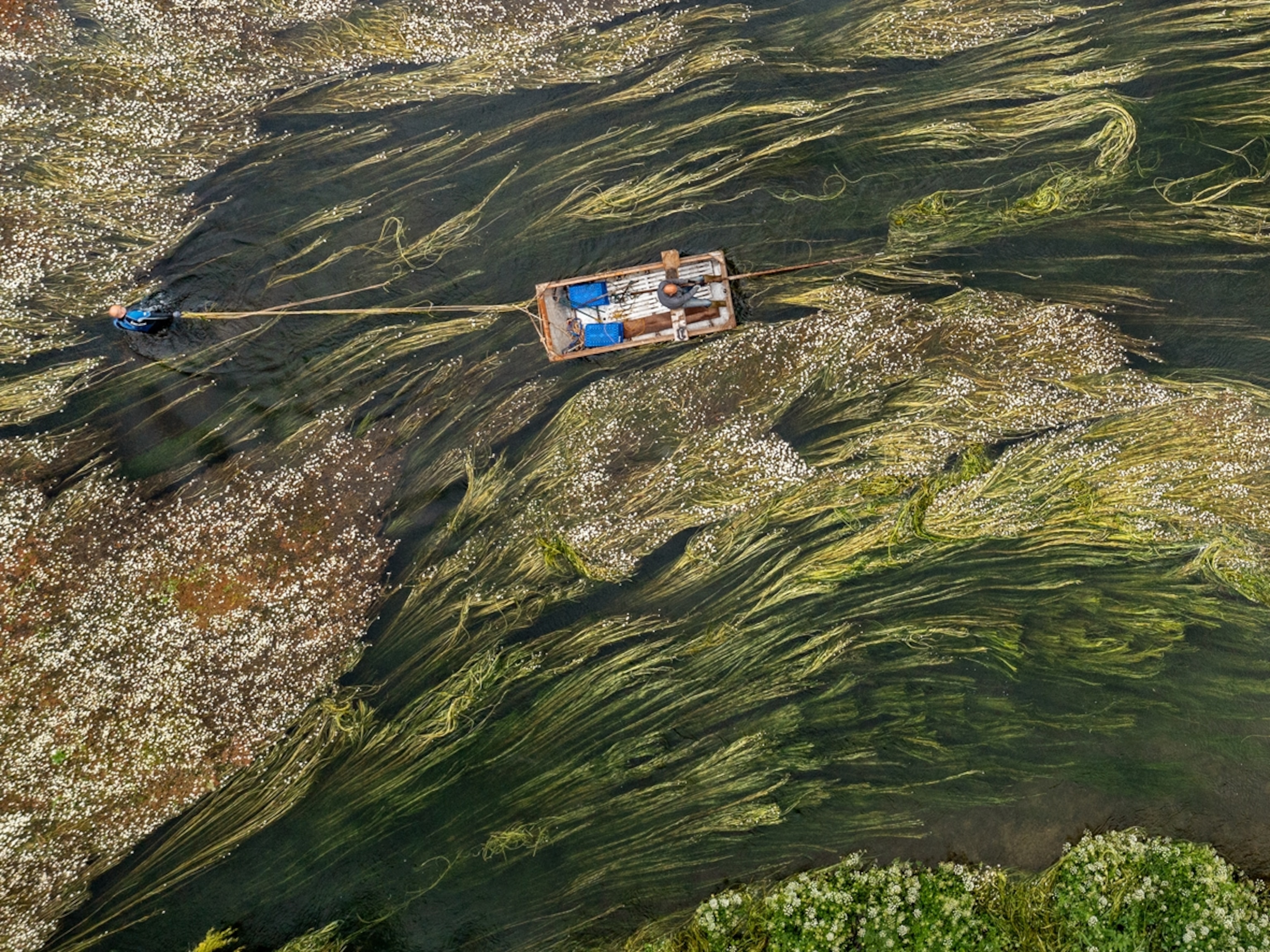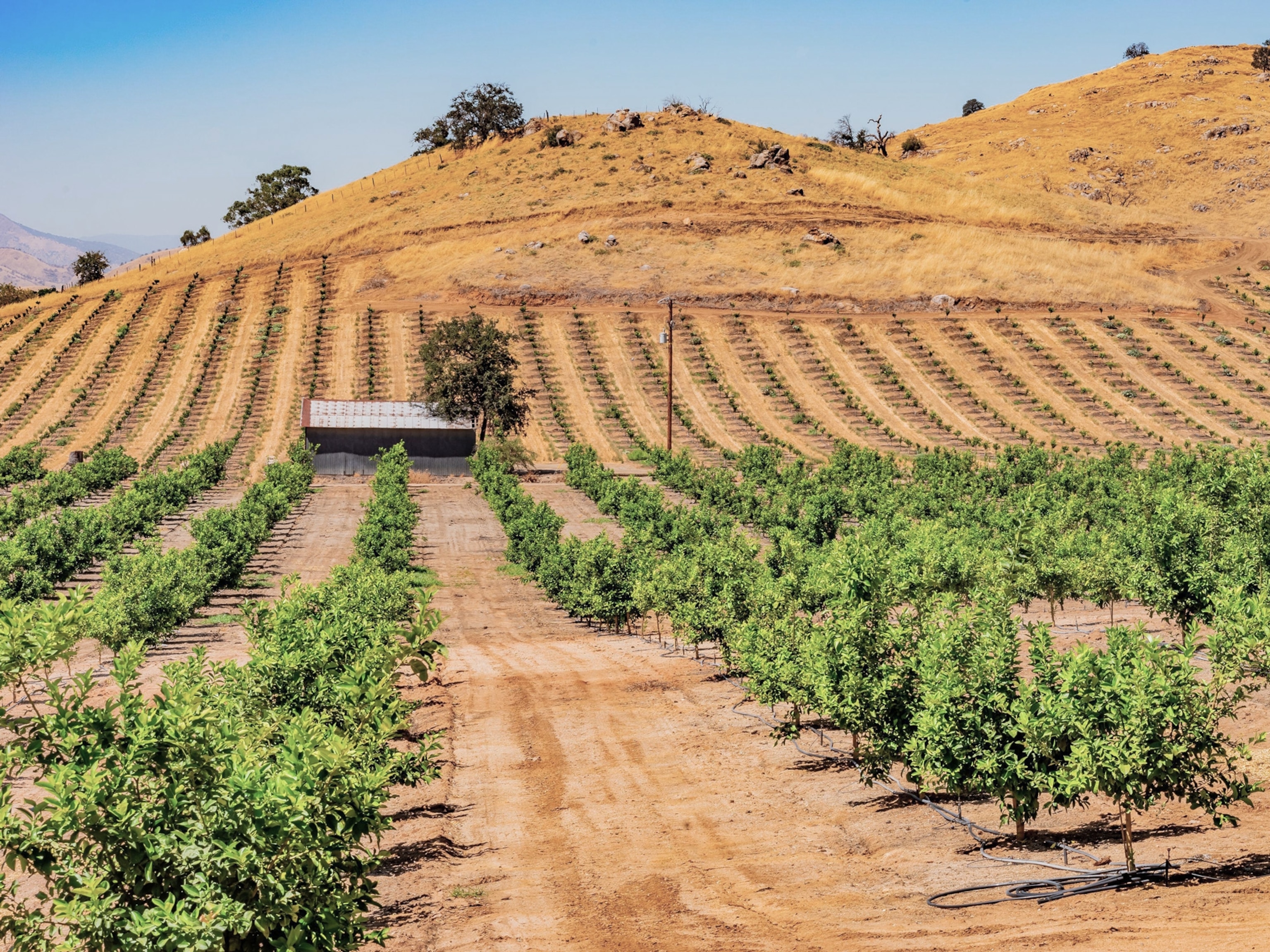Inside D.C.'s Massive Tunnel Project
A giant boring machine digs a tunnel that will channel storm water for treatment in an effort to clean the city's notoriously polluted rivers.
Deep below the nation's capital, massive tunnels are being built to save Washington's rivers—the Potomac and the Anacostia—from severe water pollution.
To get to where one of the tunnels is currently being dug, you must take a metal cage elevator 100 feet (30 meters) below the Blue Plains water treatment plant in southwestern D.C. The concrete-lined shaft is dry now, but eventually storm water will rush through.
At the bottom, visitors board a maintenance vehicle. The truck-size transport slides along train tracks for half an hour. Belts, wires, and tubes dangle into the tunnel. Visitors are asked to keep hands and feet inside the moving transport at all times.
It's hot, dark, and slightly musty, with sporadic lighting along the walls. Small puddles collect between the railroad ties.
When visitors catch up with "Lady Bird," the train-size boring machine is in the process of gouging out 13 miles (21 kilometers) of tunnel below Washington. Named after former first lady Lady Bird Johnson, a clean river advocate, the machine—443 feet (135 meters) long and weighing 1,323 tons—cuts through about 100 feet (30 meters) of clay every day.
By ducking under the red beam of a laser guidance system (a sign warns against allowing the laser to point directly in the eye) and then climbing a small ladder near the machine's front, it's possible to stand a few feet behind Lady Bird's 26-foot-diameter (8 meter) cutterhead and its spinning carbide bits.
"Some people like to go to the Capitol or the White House, but this is the coolest place in the city," said Carlton Ray, the civil engineer who leads the tunnel effort as part of the DC Clean Rivers Project for the utility DC Water.
Advancing the Tunnel
Crews of 15 to 20 men and women operate the $30 million machine in three shifts, six days a week. After each 18-minute "push," in which Lady Bird cuts through six feet (two meters) of ground, the forward motion pauses. Technicians then construct the newest section of the tunnel's inner liner by attaching six precast concrete liners, plus a keystone, to the previous section.
Each 14,000-pound (6,300-kilogram) panel is lifted, seemingly effortlessly, by the suction of a powerful vacuum. The sections are lined up with lasers, pinned with plastic dowels, and then bolted, as if it were giant IKEA furniture. Rubber gaskets ensure a watertight seal.
One foot of tunnel equals three truckloads of soil, mostly soft clay. As Lady Bird advances, soil is pushed out through nine miles (14 kilometers) of conveyor belts and sent to a nearby landfill. Over the course of the project, the borer will remove an estimated 13 million cubic feet (368,000 cubic meters) of soil, enough to fill the Lincoln Memorial's reflecting pool 14.5 times.
To commemorate National Geographic's visit, a technician spray-painted the society's name on tunnel section 1063, which was completed during the tour.
Why Build a Tunnel?
The new tunnel is a central piece of D.C.'s $2.6 billion Clean Rivers Project, a 20-year effort spanning 2005 to 2025. The goal is to get the Potomac and Anacostia rivers swimmable and fishable again, says Ray. (See "Fishing the Forgotten River in the Nation's Capital.")
Storm water collected in drains off city streets will be channeled into the new 13-mile (21-kilometer) tunnel, which will run parallel to the rivers and empty into the soon-to-be expanded Blue Plains water treatment plant.
The new excavations correct a problem that dates from the 19th century, when the city was fitted with a "combined sewer overflow" system. A combined system means storm water and sewage are channeled into the same pipes. About 750 communities around the country still use this system, notes Ray.
On dry days, the pipes are big enough to move that combined flow to local water treatment plants. But if the city gets more than a quarter inch of rain at one time, the system is overwhelmed, and engineers have to divert the entire flow—sewage and all—directly into the local rivers.
Washington has been diverting three billion gallons of raw sewage into the rivers on an annual basis, says Ray. The Anacostia takes the brunt of that flow, which is especially bad for its water quality because impurities tend to linger in slower and shallower rivers.
In 1987, Congress passed an amendment to the 1972 Clean Water Act that required major cities to address pollution from combined sewer overflows. However, many cities struggled with the financial burden of fixing their aging infrastructure.
Washington, D.C., was no exception. In 2005, the city signed a consent decree with the Environmental Protection Agency (EPA) after being noncompliant with the 1978 rules. Those terms launched the Clean Rivers Project.
"The goal is reducing the amount of raw sewage going into our water," says Deborah Nagle, a division director with the EPA's Office of Wastewater Management in Washington.
Ray says D.C.'s new system, when finished, will divert and treat an estimated 96 percent of all storm water it receives. That's one of the highest goals in the country, and well above the 85 percent mandated by the EPA. Sewage sludge that is separated out of the water will eventually be burned for electricity.
Green Infrastructure and a "Hybrid" Approach
Other U.S. cities have undertaken similar projects. Philadelphia announced a 25-year, $1.2 billion investment in so-called "green infrastructure" in 2010 and signed an agreement with the EPA in 2012 to spend $400,000 on green improvements for controlling storm water.
As part of the latter project, the city is giving residents free rain barrels, planting green roofs, swapping out asphalt for porous pavement, and establishing "rain gardens" that trap precipitation near the surface, allowing it to absorb into the ground slowly instead of running off into a drain.
Washington, too, is asking the EPA to allow modification of its 2005 plan to a "hybrid" system that includes both the new tunnel network and new green infrastructure. That would allow the city to avoid building some of the tunnels, making the whole project cheaper, says Ray.
Over the past few years, a number of communities have started to think about adding green infrastructure to their water control mix, says Andrew Sawyers, an office director at the EPA's Office of Wastewater Management.
"Green infrastructure is a multi-beneficial way to deal with a number of issues," says Sawyers. It reduces the volume of storm water flowing through the system during a rainstorm, which then makes it easier for the water treatment plant to deal with the influx.
Green features are cheaper to install than tunnels. They can also produce parklike landscapes that serve as wildlife habitat, produce oxygen, sequester carbon and pollution, and reduce the heat island effect. And residents enjoy them.
Because green improvements are aboveground, "people can actually see where their taxes went," Nagle adds. Tunnels, which are out of sight, tend to be out of mind for most people.
But vegetation and rain barrels can't deal with the full volume of water. "There has to be a balance for it to be effective," says Nagle.
Lady Bird won't solve all of D.C.'s water problems. "There will still be other sources of pollution, such as runoff of fertilizers and pesticides from lawns," says Ray. But when the tunnels are finished, "we're going to have rivers that meet water quality standards."








